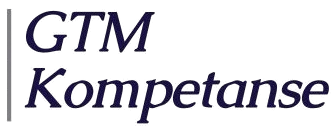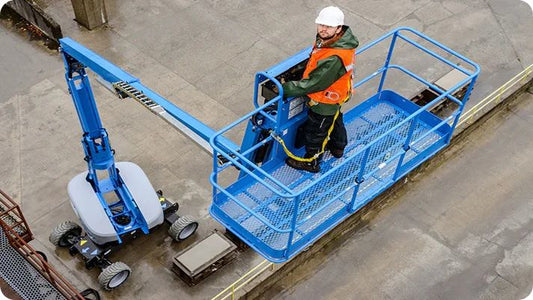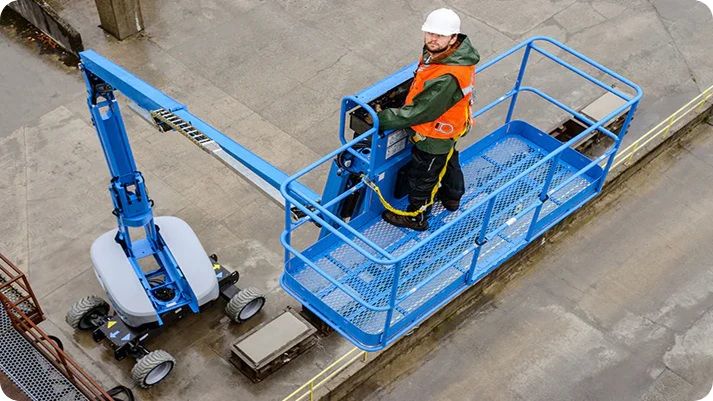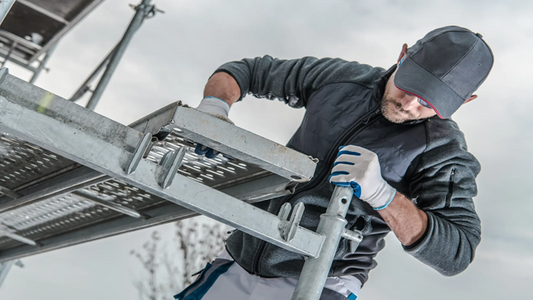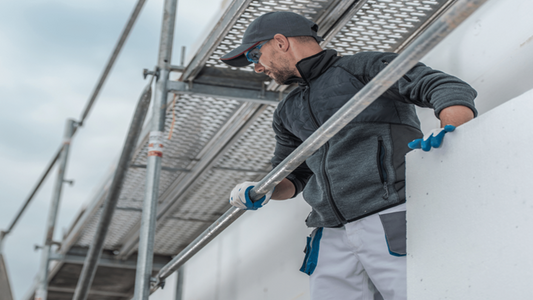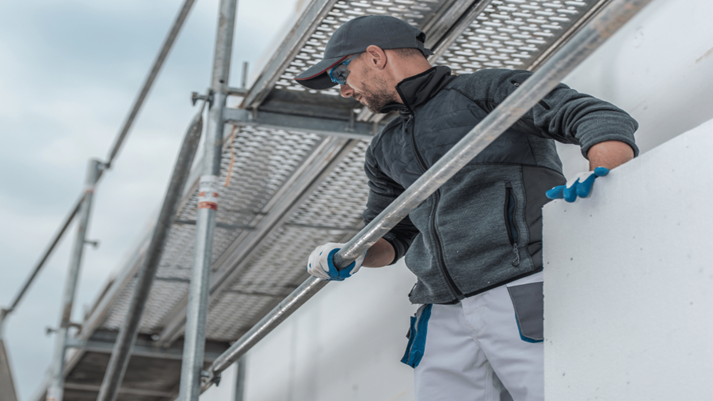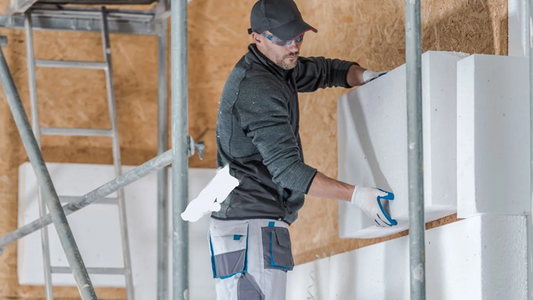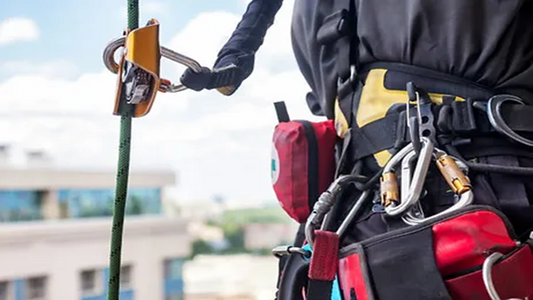When using personal lifts , it is important to know the different lift classes and what they entail. Lifts are divided into three main classes: A, B and C. Each class has its own characteristics, areas of use and safety considerations that you need to be aware of.
In this article, we will go through the three classes, so that you get a good overview before you get into the machines or take a lift course .
Lift class A – Manually movable and trailer-mounted lifts
Lift class A (type A) includes lifts that are either manually movable or mounted on a trailer. They can be equipped with a boom, telescope, scissors or a combination of these.
Most A-lifts are powered by battery or mains power, but there are also models with a combustion engine.
- Weight : approx. 200–800 kg (manual) and 1100–3500 kg (trailer-mounted).
- Working height : approximately 9–30 meters.
- Range : up to 12 meters.
- Capacity : approx. 80–230 kg.
Important considerations when using Class A
- A-lifts often have manual or hydraulic outriggers. These must always be used as described in the operating instructions.
- Remember to start with the support legs against the drawbar to avoid strain on the nose wheel.
- Many trailer-mounted lifts have auxiliary drive, which can cause sudden movements. Ensure good clearance when moving the lift.
- When driving downhill, the drawbar should always point downwards to prevent the lift from tipping.
- Transporting class A lifts can often be done by car or pickup truck, but a class BE driver's license is usually required due to the total weight.
Lift class B – Self-propelled personnel lifts
Class B lifts (type B) consist of self-propelled lifts that move on wheels or tracks. These can be operated while working at height, making them very flexible in the workplace.
- Weight : approximately 600–22,000 kg.
- Working height : approximately 4–48 meters.
- Range : up to 25 meters.
- Capacity : approx. 130–1000 kg.
Important considerations when using Class B
- B-lifts are not normally equipped with outriggers, but instead have a counterweight. Therefore, it is crucial to use them on a firm and solid surface.
- Avoid placing the lift on manhole covers, grates or uneven surfaces.
- Always follow the operating instructions for the maximum allowed slope. In general, boom lifts can withstand a slope of 3–5 degrees, while scissor lifts normally require completely flat ground.
Lift class C – Vehicle-mounted personnel lifts
Class C lifts (type C) are lifts that are mounted on vehicles, such as trucks or other vehicles. This provides great mobility and high capacity compared to classes A and B.
- Weight : approximately 3,500–50,000 kg.
- Working height : approximately 14–105 meters.
- Range : up to 40 meters.
- Capacity : approx. 200–500 kg.
Important considerations when using Class C
- Most C-lifts have support legs, and these must always be used according to instructions.
- To transport class C lifts, a class C or C1 driving license is often required, since the total weight of the vehicle exceeds 3,500 kg.
Summary
The three lift classes A, B and C cover different needs in the workplace:
- Class A : Manually movable and trailer mounted – easy to transport.
- Class B : Self-propelled lifts – flexible and efficient at height.
- Class C : Vehicle-mounted – powerful, mobile and with a long range.
Knowledge of these classes is an important part of any lift course , and gives you confidence and competence when using the machines in practice.
